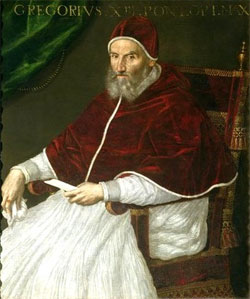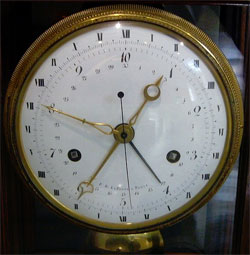365 days, 5 hours, 49 minutes (365.2424 Universal days)
Length of the tropical year, defined as the average interval between vernal equinoxes. This calendar year was the objective of the Gregorian calendar reform, which finalized the calendar as we use it today.
About 10 seconds (0.0001 universal days per year)
Lengthening of the vernal equinox year over the last two millennia.
less than 5 seconds
Variation of this length in the next few millennia.
29 days, 12 hours, 44 minutes, 2.9 seconds
Lunar month in 2000 C.E.
4236 B.C.E., the founding of the Egyptian calendar
The earliest known date.
365
Ancient Egyptian calendar year.
2637 B.C.E.
Date Emperor Huangdi invented the Chinese calendar (legend).
Early Chinese year
354 days (lunar year) with days added at intervals to keep the Chinese lunar calendar aligned with the seasons.
Early Greek year
354 days, with days added.
Jewish Year
354 days, with days added.
Early Roman year
304 days, amended in 700 C.E. to 355 days.
365 days
The year according to Julius Caesar. Also known as The Julian calendar.
January 1, 45 B.C.E
On this date Caesar changed Roman year to his own Julian calendar.
80 days
Time the old Roman calendar was misaligned with the solar year as designated by Caesar.
445 days
Total length of 45 B.C.E., known as the "Year of Confusion," after adding 80 days.
ca. C.E. 359
Date Sanhedrin president Hillel II codified the Jewish calendar.
365 days, 5 hours, 49 minutes, 12 seconds
The year as amended by Pope Gregory XIII (Gregorian calendar year).

1582
On October 15, 1582, the gregorian calendar replaced the Julian calendar, in use since 45 BC.
10 minutes 48 seconds
Length of time the Julian calendar overestimates our calendar year per year, as determined by Pope Gregory.
10 days
Days Pope Gregory removed to correct the calendar's drift.
October 5-14, 1582
Dates Gregory eliminated by Papal bull to realign his calendar with the solar year.
1582-1584
In these years most Catholic countries accepted the Gregorian calendar.
1700 & 1775
The years Protestant Germany accepted the Gregorian calendar. Partial in 1700, fully acceptance in 1773.
1752
In this year Great Britain (and the American colonies) accepted the Gregorian calendar.
11 days
Days eliminated by the British Parliament to realign the old Julian calendar with the Gregorian calendar.
September 3-13, 1752
Dates Parliament eliminated.
1873
In this year Japan accepted the Gregorian calendar.
1917 (and again in 1940)
In these years Russia accepted the Gregorian calendar.
1949
Date China accepted the Gregorian calendar system.
1971
In 1971 the Eastern Orthodox Church last voted to reject the Gregorian calendar and keep the Julian calendar.
about 12 seconds per year
Length of time the Gregorian calendar is off from the average vernal equinox year.
1 hour and 20 minutes
Length of time the Gregorian calendar has become misaligned with the vernal equinox over the years since Gregory's reform in 1582.
Decimal Time
The representation of the time of day using units which are decimally related.

4th or 5th millennium C.E.
When the Gregorian calendar will become twelve calendar hours ahead of the astronomer?s mean tropical year.
beyond the 7th millennium C.E.
When the Gregorian calendar will become twelve calendar hours ahead of the mean vernal-equinox year.
1972
Year the Atomic Time replaced Earth Time as the world?s official scientific time standard.
Current official definition of the second
time it takes for 9 192 631 770 oscillations of the Cesium atom at zero magnetic field.
290 091 329 207 984 000
The mean vernal equinox year expressed in oscillations of atomic cesium at the year 2000.
